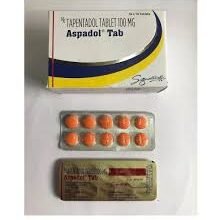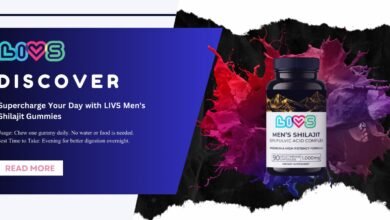
Introduction:
The challenging challenge in the field of healthcare is the interaction between pain and pharmaceutical dependency. Millions of people worldwide suffer from chronic pain, which frequently requires the use of pharmaceuticals for successful management. But relying too much on painkillers can raise issues with addiction, dependency, and side effects. We explore the symptoms, causes of prescription dependency in alleviating pain, and the careful balancing act between dangers and benefits in this investigation. Through an awareness of the subtleties in this connection, medical professionals and patients can work together to find a solution that best manages pain and reduces the risks associated with drug addiction.
Symptoms of Medication Abuse in Pain Management:
There are many ways that medication dependency can present itself in the realm of pain management, and early detection and individualized treatment plans are crucial.
Growing Tolerance:
The formation of tolerance, which occurs when people need larger dosages of a drug to have the same pain-relieving effect, is a classic sign of medicine reliance. A cycle of increasing drug dosages brought on by tolerance raises questions about the treatment’s long-term effectiveness.
Withdrawal Symptoms:
When trying to cut back on or stop taking painkillers, people who are reliant on them may experience withdrawal symptoms. Sweating, nausea, anxiety, and a heightened sense of pain are possible symptoms. Withdrawal can lead to continued dependence and make the process of reducing drug dosages more difficult.
Preoccupation with Medication:
Dependency may be indicated by a preoccupation with getting and taking medication. People could get too fixated on the readily accessible and timing of their prescription, which could negatively impact everyday activities and the standard of life.
Loss of Control:
One worrying sign of dependency is the inability to exercise control over the usage of medications. People could struggle to take medications as directed, which could cause them to self-adjust their dosages or use more than is advised. This loss of power increases the possibility of negative consequences and strengthens dependency.
Neglect of Informal Therapies:
When a person becomes overly dependent on medicine, non-pharmacological pain management techniques may be neglected. People can give medication more importance than dietary changes, physical therapy, or complementary therapies, which would prevent the implementation of a comprehensive pain management strategy.
Doctor Shopping and Prescription Manipulation:
Doctor shopping, or the practice of going to different doctors to get prescriptions, or coercing medical staff into writing prescriptions for you, might be signs of dependency. These kinds of actions demonstrate the extent people will go to in order to continue taking their medications.
Social and Occupational Disability:
Social and industrial impairment can result from an addiction to painkillers. The effects of taking medications on intellectual and physical performance might make it difficult for people to maintain relationships, complete tasks at work, or participate in routine activities.
Reasons for Pharmaceutical Dependency in Pain treatment:
Investigating the elements that lead to the emergence and maintenance of a reliance on drugs is necessary to comprehend the causes of medication dependence in pain treatment.
The chronic nature of pain:
Medications and other long-term pain management techniques are frequently required for chronic pain problems. Because chronic pain is debilitating and persistent, people who are trying to find relief from their symptoms may become more dependent on drugs.
Restricted Treatment Options:
When other modalities like physical therapy, behavioral therapies, or surgical interventions are less effective or accessible, people may believe that drugs are the best or only option for treating their pain.
Psychological Factors:
Unresolved trauma, sadness, anxiety, and other psychological issues can all play a role in the formation of pharmaceutical reliance. People may turn to drugs as a coping strategy to lessen the emotional agony that comes with having chronic pain.
Lack of Access to other therapy:
Reliance on pharmaceuticals may result from restricted access to non-pharmacological therapy or other modalities. People’s capacity to investigate various pain management modalities may be restricted by elements like financial limitations, geographical location, or a lack of knowledge about available alternatives.
Medication dependency can be exacerbated by overprescribing painkillers, especially opioids, and by inadequately monitoring patients by medical professionals. Patients may receive larger doses than recommended as a result of improper oversight, raising the possibility of reliance and negative effects.
Patient Expectations and Pressure:
The desire for medication-dependent solutions may be influenced by the patient’s expectations for total and instantaneous pain relief as well as societal pressures to attain outcomes quickly. Healthcare professionals may find it difficult to control patients’ expectations and encourage a well-rounded pain management strategy.
Biological Factors:
The likelihood of medicine reliance can be influenced by genetic predispositions, individual differences in pain perception, and changes in drug metabolism. Certain individuals may possess certain biological traits that make them more prone to developing dependency.
Risks and Benefits of Pain treatment:
To achieve the best results while reducing the chance of drug dependency, pain treatment risks and benefits must be carefully and individually balanced.
Comprehensive Evaluation:
It is crucial to do a comprehensive evaluation of the patient’s pain level, medical background, and psychosocial issues. Comprehending the fundamental reasons behind pain enables a focused and individualized method of managing pain that integrates both pharmacological and non-pharmacological techniques.
Multidisciplinary Care:
An all-encompassing and holistic approach to pain management is made possible by assembling a multidisciplinary team that includes doctors, physical therapists, psychologists, and pain experts. Working together can better address the various facets of pain and lessen the need to use drugs as the only form of treatment.
Patient education:
Knowledge about the causes and effects of a patient’s pain condition, available treatments, and the possible advantages and disadvantages of prescription drugs helps patients make well-informed decisions. People who get clear information are better able to take an active role in their care and recognize the value of a well-rounded pain management strategy.
Customized Treatment Plans:
It is essential to create customized treatment plans that take into account the distinctive qualities of every patient. Achieving a balance between reducing dependency and providing effective pain relief can be facilitated by customizing interventions according to the individual’s preferences, underlying medical issues, and the type and level of pain.
Non-Pharmacological Modalities:
Complementing pharmaceutical treatments with non-pharmacological ones offers different approaches to managing pain, including acupuncture, physical therapy, cognitive-behavioral therapy, and mindfulness-based activities. Changing up treatment modalities takes into account the complex nature of chronic pain while lowering dependency on pharmaceuticals.
Frequent Monitoring and Adjustments:
It’s critical to regularly check the use of medications, including reevaluating their efficacy and any possible side effects. When a patient’s pain level, general health, or responsiveness to medicine changes, healthcare professionals should be quick to modify treatment strategies.
Risk Mitigation and Stratification:
Two essential elements of pain treatment are applying mitigation techniques and classifying people according to their likelihood of becoming dependent on medications. It is possible to implement preemptive treatments, like attentive monitoring, counseling, and alternative tactics, when individuals with a greater risk profile are identified.
Pain Rehabilitation Programs:
For those with chronic pain and pharmaceutical dependency, pain rehabilitation programs, which include interdisciplinary interventions and educational components, are helpful. The goals of these programs are to promote general well-being, strengthen coping skills, and increase functioning capacities.
Shared Decision-Making:
By allowing patients to actively participate in their own pain treatment, shared decision-making promotes cooperation. Involving patients in conversations about long-term objectives, possible hazards, and available treatments improves treatment compliance and lowers the risk of pharmaceutical dependency.
Conclusion:
In conclusion, a nuanced and customized approach is necessary to reconcile effective pain management with reducing potential hazards, given the complex interactions between pain and pharmaceutical reliance. In order to create treatment programs that effectively address the complex nature of chronic pain, healthcare providers must be able to identify the signs of pharmaceutical reliance as well as the underlying causes of it. Healthcare professionals and patients must work together to navigate the risks and benefits, placing a strong emphasis on patient education, interdisciplinary treatment, thorough assessment, and a variety of pain management techniques. Healthcare professionals can optimize results, enhance the quality of life for people with chronic pain, and reduce the risks associated with pharmaceutical reliance by promoting a comprehensive knowledge of pain and medication usage.


